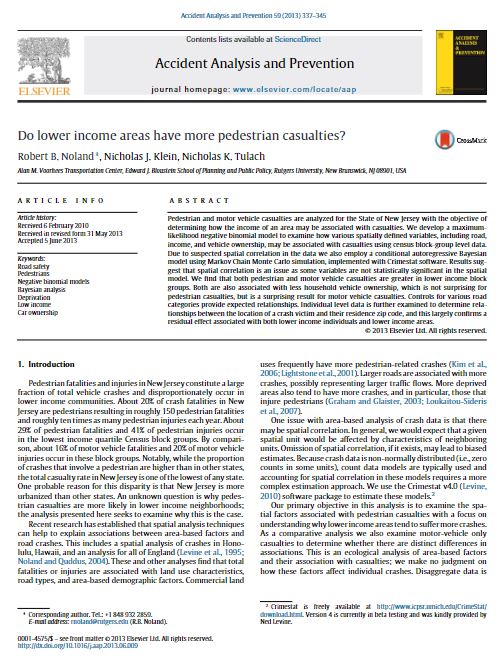Abstract
Pedestrian and motor vehicle casualties are analyzed for the State of New Jersey with the objective of determining how the income of an area may be associated with casualties. We develop a maximum-likelihood negative binomial model to examine how various spatially defined variables, including road, income, and vehicle ownership, may be associated with casualties using census block-group level data. Due to suspected spatial correlation in the data we also employ a conditional autoregressive Bayesian model using Markov Chain Monte Carlo simulation, implemented with Crimestat software. Results suggest that spatial correlation is an issue as some variables are not statistically significant in the spatial model. We find that both pedestrian and motor vehicle casualties are greater in lower income block groups. Both are also associated with less household vehicle ownership, which is not surprising for pedestrian casualties, but is a surprising result for motor vehicle casualties. Controls for various road categories provide expected relationships. Individual level data is further examined to determine relationships between the location of a crash victim and their residence zip code, and this largely confirms a residual effect associated with both lower income individuals and lower income areas.
